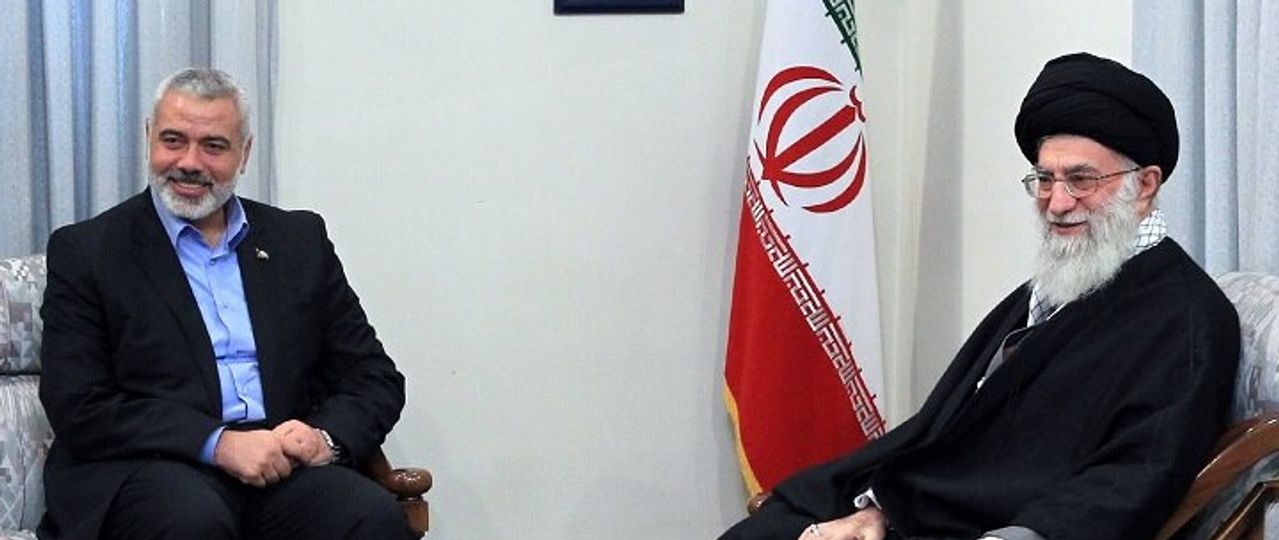
Iran’s Next Step in Syria: Armed Militias Turn to Economic Militias
Latest in a series of developments in the Middle East, Iran’s President Ebrahim Raisi travelled to Syria on Wednesday at the head of a delegation.
Syria seems to now have an opportunity to return to the Arab League, rebuilding its identity as an Arab society. For years, this country has been a backyard for the Islamic Republic of Iran and an important and crucial part of the ‘strategic depth’ policy of this regime in the Middle East.
It is a highway that connects Iran to Lebanon and Hezbollah and lets it be close to the borders of Israel. It is the most important friend and ally of the Islamic Republic.
Syria’s return to the Arab League and lifting of the sanctions will lead to billions of dollars flowing to the country for reconstruction, investment, development and infrastructure.
Since the civil war began in Syria, Iran has been a key ally of President Bashar Assad, alongside Russia. Militias linked to Iran have played an important role in domestic clashes in the country. Given the recent developments, many questions are now asked about the continuation of these forces in Syria.
Raisi entered Damascus as the whole region, hoping for reduction of tensions, looks on optimistically to the ceasefire in Yemen and resumption of ties between Iran and Saudi Arabia.
These developments began with the measures taken by the Crown Prince of Saudi Arabia, Prince Mohammad bin Salman, aimed at de-escalation in the region. Riyadh improved its ties with Qatar and Türkiye and went on to re-establish diplomatic ties with Iran.
It appears that the Islamic Republic of Iran has also been impacted by the de-escalation policy of the Crown Prince as it is also following its own economic interests in improving ties with regional countries. It has thus taken unprecedented measures. There is a possibility for resumption of ties with Bahrain. On April 20, Iran’s foreign minister, Hossein Amirabdollahian, held a phone call with his Jordanian counterpart. None of this would have been possible without approval by the Saudis.
Raisi’s trip to Syria can be a beginning for his regional trips to the Arab world, especially Oman, Iraq, United Arab Emirates and Saudi Arabia.
The Iranian regime has spent billions of dollars on its militias in Syria, hoping to keep Assad in power. According to estimates by experts and international observers, Syria now needs 400 billion dollars in the next 10 to 15 years for reconstruction.
This massive amount can come from investments by rich Arab countries and the Iranian regime will also not easily lose this economic opportunity.
Contracts have been signed in communications, transportation, railway expansion (Iran to Syria), reconstruction, oil and gas. They are future-looking, aiming to guarantee a share for the Islamic Republic.
Since the economic dimension of the trip is important for the Iranian regime, Tehran must also work to get rid of the militias currently in Syria. This will help it be able to use the existing economic opportunities. The next step by the regime will thus be replacing the militias or turning them into a new concept: “economic militias”. In other words, the IRGC-linked militias will now become Iranian economic actors in Syria.
Afghanistan faced similar conditions following the fall of Taliban in 2003. IRGC’s economic section expanded its activities there aimed at “reconstruction” while signing construction contracts and exporting Iranian made commodities.
If the Iranian regime’s plan of improving ties with regional Arab countries goes ahead without problem, solving Yemen’s crisis should lead to another development: election of a president in Lebanon and putting an end to months of interim governance and the political impasse made by groups linked to Hezbollah and Tehran.
Iran has also been invited to the next Syria meeting to be held in Moscow next month. Aimed at fixing ties between Syria and Türkiye, the meeting will feature foreign ministers of Ankara, Damascus and Tehran. Since China has recently played a role in regional affairs, it looks like it will also be invited here. There will also be representatives from the Syrian opposition.
The meeting can bring about final agreements to put an end to the war in Syria and be the final step to complete Syria’s return to the Arab League and lifting of sanctions.
Tehran knows that Syria’s return to the Arab League will decrease its strategic influence there. This is why it is trying to prepare the grounds for changing the nature of IRGC’s presence in Syria.
This being said, realization of the contracts signed between Iran and Syria depends on lifting of sanctions on the country and resolving the West’s conflict with Iran over the nuclear program.
Until this two important points haven’t been achieved, all the large and important contracts between Tehran and Damascus will only be small deals aimed at circumventing sanctions on the two countries.
Source: aawsat





